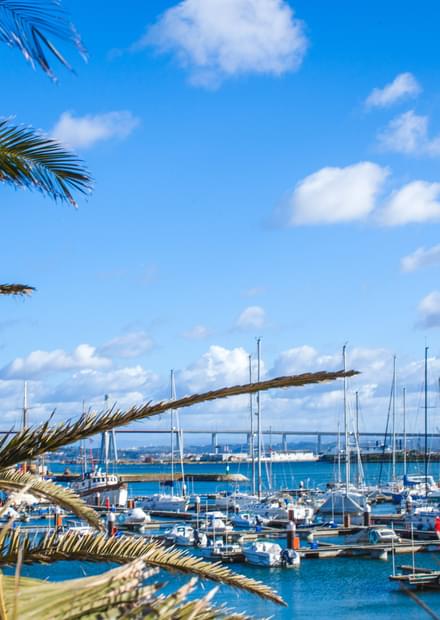The only islands of the Portuguese mainland
Berlenga archipelago consists of 3 groups of small islands: Berlenga Grande (the only inhabited one, that can be visited by boat from Peniche with limited access for sustainability purposes) and the nearby reefs, Estelas and Farilhões- Forcadas; their geological nature is different from that of the Portuguese coast.
With a total area of 18,502.3 hectares, a land area of 725.6 hectares and a marine area of 17,776.7 hectares, Berlengas is a UNESCO Biosphere Reserve with a unique island ecosystem, high biological value of the surrounding marine area and botanical interest, a specific marine avifauna. And then there is also the Archaeological heritage and a particular relationship with the fishing community.
The archipelago is formed by a complex of granitic and metamorphic rocks: no wonder the landscape is dramatic. With underwater caves and crevices.
This wonderful set of coastal reefs, located at the top of the escarpment of Canhão da Nazaré, has the perfect location for a high diversity of species, marine habitats, a unique landscape where Shearwaters (Calonectris borealis), Yellow-footed Gulls (Larus michahellis), Galhetas (Phalacrocorax aristotelis), Airos (Uria aalge) and the also migratory Roques-de-castro (Hydrobates castro).
And in Berlenga there are strong winds, loaded with salt, lack of soil, but even so, there are a hundred species, some endemic such as the very delicate Arméria das Berlengas (Armeria berlengensis). Or the Pulicária-das-berlengas (Pulicaria microcephala). Or the herniária-das-berlengas (Herniaria berlengiana).
The antiquity, the isolation of the island and the particularities of the rocky substrate make them unique.
Men and Gods
The island of Berlenga Grande was occupied in 1513 by a community of monks of the Order of St. Jerome, who were the founders of the Monastery of Misericórdia da Berlenga, helping castaways and providing them shelter for 35 years.
During this period, peacefulness and isolation were violently interrupted by pirate attacks, who plundered the convent and captured the monks, turning them into slaves in North Africa. Therefore, many monks have abandoned the archipelago.
The monastery of Berlenga fell into ruins, and only a few walls and loose stones have remained.
The human occupation of Berlengas is over 2500 years old. There are archaeological remains on land and underwater. The Romans also reached Berlengas and reinforced their strategic importance.
There is a small quadrangular building that would have been a lookout post, or a lighthouse.
Many centuries later the Island would return to human occupation. And other Gods came. The monastery of Misericórdia brought God back in the 16th century. And in the 17th century, men built it again: the Fort of S. João Baptista.
Berlenga Lighthouse
At the highest peak of the island rises the Lighthouse of the Duke of Bragança or Berlenga Lighthouse, built in 1840. In the beginning it was fed by liquid fuel, first olive oil, then oil, and finally by electric power in 1926.
It is an automatic lighthouse since 1985 and it now works since 2001 with sun energy. There are still lighthouse keepers working in the Berlenga Lighthouse. Under good weather conditions, it is possible to see its light in the distance. It is approximately 29 meters high and it has 265 steps.
Visits to Berlenga
There are several active tourism companies that organise boat trips to the Berlenga archipelago, normally from May to September. The boat trip takes half an hour, approximately.
Apart from the boat trips, these companies also organise visits to the caves; scuba diving; canoeing; walking trails; bird-watching, and so on.
The departure takes place from the marina of Peniche.
Important notes:
- It is highly recommendable to book your boat trip in advance;
- Take a beach towel and fresh clothing;
- Take reusable water bottles, for there are no shadows nor sweet water streams in Berlenga;
- Use sun screen and cap, even on cloudy days.










